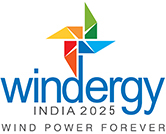India has emerged as one of the world's largest and fastest-growing wind energy markets. The country's increasing energy demands, coupled with a focus on sustainable development and reducing carbon emissions, have fuelled the demand for wind energy projects. The Government of India has been taking several steps to increase the installation of wind energy capacity in the country by promoting wind power projects through private sector investment. This is done by providing various fiscal and financial incentives to both domestic and international enterprises.
At UNCOP 26, India made a commitment to step up its climate action by:
- Reach 500 GW Non-fossil energy capacity by 2030.
- 50 per cent of its energy requirements from renewable energy by 2030.
- Reduction of total projected carbon emissions by one billion tonnes from now to 2030.
- Reduction of the carbon intensity of the economy by 45 per cent by 2030, over 2005 levels.
- Achieving the target of net zero emissions by 2070.
Wind energy will play a pivotal role in achieving the above objectives and has already made impressive progress in terms of capacity addition, manufacturing capabilities and other areas in India. India's Central Electricity Authority (CEA) has projected an increase in wind power capacity of 40500 MW from 2022 to 2027 and 53100 MW from 2027 to 2032, amounting to 8100 MW of new installations per year in next 5 years. These targets provide a clear roadmap and long-term stability for businesses in the wind energy sector.
It is also significant to mention India's goals of utilising the enormous potential of its 195 GW of offshore energy. Central and State Governments are working together in making this a reality. The power generated from RE can be transformed into transportable power in the form of Green Hydrogen, Ammonia and Methane.
In the last few years, the wind energy sector has witnessed significant technological advancements, leading to improved turbine efficiency, increased capacity, and reduced costs. Advancements in turbine design, blade technology, and control systems have made wind energy more competitive and financially viable for businesses.
The wind energy market in India is experiencing a shift towards hybrid projects, integrating wind power with solar, storage, and other renewable energy sources. This transition opens new avenues for businesses to diversify their offerings and capitalize on the evolving market dynamics.
Overall, the market scenario for businesses in the wind energy sector in India is highly favourable. With a conducive policy framework, growing demand, technological advancements, and abundant wind resources, there are ample opportunities for businesses to thrive and contribute to the country's clean energy transition.
It is the need of the hour for the companies involved in the wind sector to innovate new technologies, products, solutions and services that can accelerate this progress.
Sign up for WINDERGY India today to be a part of India's success story in the wind sector!


